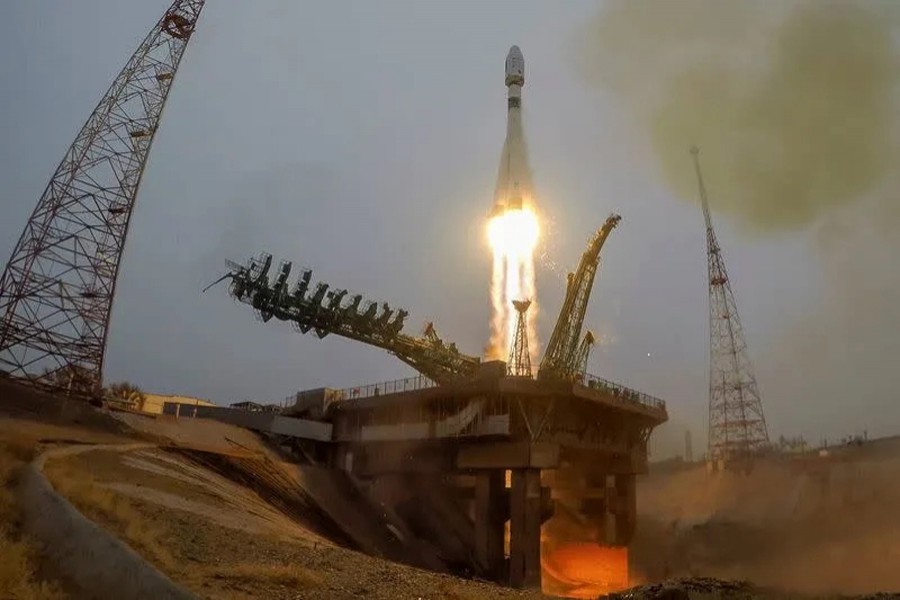An ever-swelling amount of space debris is threatening satellites that hover around Earth, making insurers leery of offering coverage to the devices that transmit texts, maps, videos and scientific data, industry sources said.
Thousands of new satellites are being launched into areas where orbital rubbish has been accumulating since early space missions nearly 65 years ago. The surging collision risks have left the handful of insurers that offer satellite coverage pulling back or exiting the market, executives and analysts said.
"This is a real issue for insurance," said Richard Parker, co-founder of Assure Space, a unit of AmTrust Financial.
Over a year ago, the company stopped providing spacecraft insurance in the Low Earth Orbit (LEO) where most satellites operate. The few policies it has sold since then exclude collision damage, reports Reuters.
"It may start to get difficult to get that type of coverage in the near future as more insurers realize that this is a significant risk that we can't even get our arms around," Parker told Reuters.
There are 8,055 satellites roaming Earth's orbits, 42 per cent of them inactive, according to Seradata, which tracks the statistics. Most operate in the LEO, which extends 2,000 kilometers, or 1,243 miles, beyond Earth.
The number of active satellites has jumped 68 per cent from a year ago and more than 200 per cent from five years ago.
Graphic: BILLIONAIRE ELON MUSK'S SPACEX IS SENDING HUNDREDS OF NEW SATELLITES TO ORBIT
Much of the new activity has come from billionaire Elon Musk's SpaceX, as it expands its Starlink broadband network.
SpaceX did not reply to requests for comment. As a privately held company, it does not disclose whether its satellites are insured.
Other major companies including Google, Apple and Amazon also rely on satellites to transmit data, as do telecom providers, government agencies and universities working on space research, insurance sources said.
Space coverage has been a lucrative niche for insurers, which took in $475 million in gross premiums to cover satellites, rockets and unmanned space flights last year and paid just $425 million in losses, according to Seradata.
Space premiums are 10-20 times aviation premiums, said Peter Elson, CEO of insurance broker Gallagher Aerospace.
"This is a risky business in the first place,” he said.
Mess In Space
The insurance dilemma underlines a greater problem: no one is cleaning up the mess in space.
Government agencies track thousands of pieces of debris, including inside a "graveyard orbit" where old geostationary orbit (GEO) satellites are sent to die with their last bits of fuel, 36,000 kilometers, or 22,370 miles into space.
LEO satellites are much smaller than GEO satellites. Typically the size of a small refrigerator, they need $500,000 to $1 million worth of coverage, far below the $200 million to $300 million for those in the GEO, industry experts said.
Historically, policies have protected devices against loss, failure or damage from launch through their orbiting life, but not revenue losses from outages. Operators could add liability coverage in case one satellite damages another or re-enters the atmosphere in a way that causes damage or injury on the ground.
About half of new satellite launches now have insurance, said Denis Bousquet, an executive in AXA XL’s space business. Industry sources expect more policies to exclude collision coverage and fewer satellites to have insurance at all.
"The concentrations of debris and increasing numbers of satellites being deployed are increasing the potential for collision," said Charles Wetton, underwriting manager for space policies at insurer Global Aerospace.
Graphic: SATELLITES ROAMING EARTH'S ORBITS
Debris Graveyard
Only 11 spacecraft have suffered a partial or total failure due to suspected debris strikes over the past decade, according to Seradata, making insurer worries largely theoretical for now.
Yet because insurers predict risks over the life of current and future policies, space underwriters fret over doomsday scenarios years ahead.
Wetton cited the possibility of a "Kessler effect," named for NASA space debris expert Don Kessler who developed the theory in 1978. It anticipates LEO becoming so crowded that there is a cascade of collisions.
There are no signs such a situation is imminent, but it would render entire orbits uninsurable, Wetton said.
Assure Space's Parker said he is confident a major collision will occur within the next three years, rendering insurance nearly impossible to obtain.
New insurers may enter the market to alleviate supply-demand strains. Until then, industry experts said companies, universities and government agencies will likely bear more financial responsibility.
Taxpayers also may also end up on the hook more often.
In June, the Export-Import Bank of the United States (EXIM), approved $80.7 million in financing for a SpaceX launch as well as a launch and in-orbit insurance for Spanish communications network Hispasat SA.
"The availability of EXIM's financing enables SpaceX and other U.S. exporters to remain competitive," said EXIM Acting First Vice President and Vice Chairman James Cruse.




